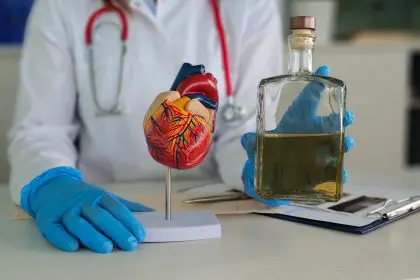The liver stands as one of the body’s most resilient organs, capable of remarkable regeneration even after sustaining significant damage from years of alcohol consumption. This vital organ, responsible for hundreds of essential functions from toxin filtration to nutrient processing, possesses extraordinary healing capabilities that activate when alcohol intake ceases. Understanding this recovery journey provides valuable insight for those taking steps toward improved health after periods of heavy drinking.
How alcohol impacts this vital organ
Alcohol’s journey through the body inevitably concentrates in the liver, the primary organ responsible for metabolizing this toxin. When alcohol enters the bloodstream, the liver immediately prioritizes its breakdown above other functions, creating a cascade of effects throughout this complex organ.
The liver processes alcohol through multiple enzyme systems, predominantly alcohol dehydrogenase (ADH) and the microsomal ethanol-oxidizing system (MEOS). These mechanisms convert alcohol first to acetaldehyde—a highly toxic compound—and then to acetate, which the body can use for energy. This detoxification process generates harmful free radicals that damage liver cells and their delicate structures.
With repeated exposure to alcohol, the liver undergoes distinct stages of injury. Initially, fat accumulates within liver cells, creating a condition called fatty liver disease. This early stage often produces no symptoms but represents the first warning that alcohol consumption exceeds the liver’s processing capacity. Continued drinking can progress to alcoholic hepatitis, characterized by widespread inflammation and cell death, and eventually to cirrhosis, where functional liver tissue becomes replaced by permanent scar tissue.
The relationship between alcohol consumption and liver damage follows both dose-dependent and individual patterns. While heavy, prolonged drinking substantially increases risk, genetic factors, nutritional status, and concurrent conditions like viral hepatitis or obesity significantly influence how quickly and severely alcohol affects liver health. This explains why some heavy drinkers develop cirrhosis within a decade while others maintain relatively healthy liver function despite similar consumption patterns.
The liver’s remarkable regeneration abilities
Unlike many organs that replace damaged cells with scar tissue, the liver possesses extraordinary regenerative capabilities. When portions of healthy liver tissue are removed—whether through surgical resection or injury—remaining healthy cells can proliferate rapidly to restore the organ to its original size and function.
This regenerative process begins within 24-48 hours after injury ceases. Specialized liver cells called hepatocytes exit their normal resting state and begin dividing, while the body increases blood flow to the liver, delivering essential nutrients and oxygen to support this intensive rebuilding process. Even with as little as 25% of original liver tissue remaining, complete regeneration remains possible under the right conditions.
However, this regenerative capacity has crucial limitations. The liver cannot regenerate from cells that have been permanently converted to scar tissue (cirrhosis). Additionally, continued exposure to alcohol or other toxins during the healing process severely impairs regeneration. This explains why abstinence represents the absolute foundation of liver recovery—the organ’s natural healing mechanisms simply cannot function effectively while still processing alcohol.
The 7 indicators of liver healing after alcohol cessation
When alcohol consumption stops, the liver initiates its remarkable recovery process, generating several observable and measurable signs of healing that typically emerge in a predictable sequence.
- Reduction in systemic inflammation occurs rapidly
Within days of alcohol cessation, the body shows measurable decreases in inflammatory markers as the liver’s detoxification burden lessens. This reduced inflammation manifests through multiple observable changes, including decreased facial puffiness, particularly around the eyes and cheeks, areas particularly sensitive to inflammatory processes.
Skin appearance often improves noticeably, with reduced redness and irritation as systemic inflammation subsides. Many people report significant reductions in morning joint stiffness and general body aches previously attributed to “getting older” but actually stemming from alcohol-induced inflammatory responses.
This early reduction in inflammation provides immediate positive reinforcement for continued abstinence, often becoming noticeable between 3-7 days after the last drink. The timeline varies based on previous consumption patterns and individual metabolic factors, but even very heavy drinkers typically observe these initial changes within the first week.
- Energy levels rebuild as liver function normalizes
As the liver recovers from constant alcohol processing, it gradually resumes normal glucose regulation and storage functions. This metabolic normalization creates noticeable improvements in energy levels, typically emerging between 2-4 weeks after cessation.
Morning energy particularly improves as the liver regains its ability to maintain stable blood glucose levels throughout the night. Many former drinkers report being surprised by their ability to wake refreshed without needing caffeine—often for the first time in years—as their liver’s glycogen storage and release functions normalize.
Physical endurance during exercise or daily activities noticeably increases as the liver more efficiently processes nutrients and maintains proper blood composition. This improved stamina often motivates people to increase physical activity, creating positive feedback loops that further support liver recovery through improved circulation and reduced body fat.
- Digestive improvements signal recovering liver function
The liver produces bile essential for proper fat digestion. As liver health improves, bile production and quality normalize, reducing digestive discomfort previously caused by impaired fat metabolism. Many people notice significantly decreased bloating and gas, particularly after higher-fat meals, within 3-6 weeks of stopping alcohol.
Bowel movement patterns often normalize, with improved consistency and reduced urgency as the digestive system benefits from proper bile production and intestinal inflammation subsides. This improvement can seem gradual but becomes clearly apparent when reflecting on previous digestive difficulties that had been incorrectly attributed to food sensitivities or aging.
Nutrient absorption improves as the intestinal lining heals and the liver better processes incoming nutrients. This enhanced absorption often manifests as improved appetite regulation and reduced cravings for high-calorie, nutrient-poor foods that temporarily spike blood sugar but don’t satisfy deeper nutritional needs.
- Sleep quality transforms as liver metabolism stabilizes
Alcohol significantly disrupts sleep architecture even after its sedative effects wear off. As the liver recovers, sleep quality markedly improves, with increased REM sleep and fewer middle-of-night awakenings. These improvements typically begin within 1-2 weeks but continue progressing for several months.
Dream recall often increases dramatically, a direct result of improved REM sleep that had been suppressed during active drinking. Many people report vivid dreams returning after years of absent dream memories, reflecting the brain’s recovery alongside liver healing.
Morning cognition sharpens considerably as the liver better regulates blood glucose throughout the night, delivering stable energy to the brain. The “brain fog” many drinkers experience upon waking diminishes or disappears entirely as liver function normalizes, typically becoming noticeable 3-8 weeks after alcohol cessation.
- Blood test improvements provide objective evidence
Liver enzyme levels in blood tests offer objective measurements of recovery progress. Enzymes like ALT (alanine aminotransferase) and AST (aspartate aminotransferase) typically decrease significantly within 2-8 weeks of abstinence, though the timeline varies based on previous damage extent.
Gamma-glutamyl transferase (GGT), a highly sensitive marker of alcohol-induced liver stress, shows particularly dramatic improvement, often decreasing by 50-80% within 4-8 weeks of sobriety. This enzyme’s reduction represents one of the most reliable objective indicators of liver recovery.
Bilirubin levels normalize as the liver regains its ability to process this waste product from red blood cell breakdown. For those who had developed yellowish skin or eye discoloration (jaundice), this visible symptom typically resolves within 2-8 weeks as bilirubin processing improves, though severe cases may take longer.
- Immune function strengthens with liver recovery
The liver plays crucial roles in immune function, including filtering bacteria from the blood and producing immune factors that help fight infection. As liver function improves, many people notice reduced frequency of minor illnesses like colds and respiratory infections, typically becoming apparent 2-3 months into sobriety.
Wound healing often improves significantly as the liver better produces clotting factors and proteins essential for tissue repair. This change may not be noticed until an injury occurs, but represents important functional recovery of liver capabilities.
Autoimmune manifestations sometimes diminish as the liver’s role in immune regulation normalizes. Some individuals with inflammatory conditions like psoriasis, arthritis, or certain gastrointestinal disorders report reduced symptoms several months into liver recovery, though such improvements vary considerably between individuals.
- Psychological clarity emerges from improved detoxification
The brain-liver connection operates bidirectionally, with liver function significantly affecting mental clarity through multiple mechanisms. As liver detoxification capabilities recover, many people report substantially improved concentration and mental focus beginning around 3-4 weeks and continuing to improve for months.
Emotional regulation often strengthens as the liver better processes hormones and neurotransmitters. Many individuals report reduced irritability and emotional reactivity 2-3 months into sobriety, creating improved relationships and workplace functioning.
Anxiety levels frequently decrease substantially as liver metabolism normalizes. The unstable blood sugar, poor sleep, and toxin accumulation associated with compromised liver function all contribute to anxiety states, explaining why psychological improvements represent legitimate indicators of physiological liver recovery rather than merely psychological benefits of sobriety.
Timeline of liver recovery after alcohol cessation
Understanding the typical progression of liver recovery helps create realistic expectations and recognizes achievements during the healing journey.
The first month after stopping alcohol consumption focuses primarily on reducing acute inflammation and beginning fat clearance from liver cells. Fatty liver changes begin reversing remarkably quickly, with measurable improvements in hepatic fat content often visible on imaging within 2-4 weeks of abstinence.
Months two through six involve substantial hepatocyte regeneration and functional restoration. During this period, liver cells multiply to replace those damaged by alcohol, while surviving cells increase their metabolic capacity. Blood test improvements accelerate during this phase, with liver enzymes often approaching normal ranges even in cases of previously elevated values.
The six-month to one-year period focuses on consolidated healing and functional optimization. Even after liver enzymes normalize, subtler aspects of liver function continue improving, including bile production quality, glycogen storage capacity, and detoxification efficiency for non-alcohol substances.
Beyond the one-year mark, ongoing healing addresses residual fibrosis (mild scarring) that hasn’t progressed to permanent cirrhosis. Research indicates that even some degree of fibrosis can gradually improve with sustained abstinence, though this process may require 2-5 years depending on damage severity.
For those with cirrhosis (permanent scarring), the timeline shifts toward compensated function rather than complete reversal. While cirrhotic tissue cannot regenerate to normal liver cells, abstinence prevents further damage and allows remaining healthy liver tissue to compensate remarkably well, often enabling near-normal function despite previous damage.
Factors influencing liver recovery success
Several variables significantly impact how quickly and completely the liver recovers after alcohol cessation, helping explain the wide variation in individual recovery experiences.
Age plays a substantial role in regenerative capacity, with younger individuals generally experiencing faster and more complete recovery. The liver’s regenerative ability diminishes somewhat with age, though even older adults demonstrate remarkable healing potential when other supportive factors align.
Nutritional status critically impacts recovery, with protein availability particularly essential for rebuilding liver tissue. Deficiencies in certain B vitamins, zinc, and antioxidants—common among heavy drinkers—can significantly delay healing until these nutrients reach adequate levels through improved diet or supplementation.
Metabolic health influences recovery trajectory, with conditions like diabetes, obesity, and metabolic syndrome potentially slowing healing. These conditions create additional stress on the liver through mechanisms like insulin resistance and fatty infiltration independent of alcohol consumption.
Genetic factors create significant variation in liver recovery rates between individuals with similar drinking histories. Genetic differences in enzyme systems that process alcohol and repair mechanisms that address tissue damage help explain why some people recover more quickly and completely than others despite similar circumstances.
Concurrent liver conditions such as viral hepatitis, autoimmune liver disease, or non-alcoholic fatty liver disease complicate the recovery picture. When these conditions exist alongside alcohol-related damage, addressing both issues simultaneously becomes essential for optimal improvement.
Supporting your liver’s healing process
While abstinence from alcohol provides the foundation for liver recovery, several additional strategies can optimize and potentially accelerate the healing process.
Nutritional approaches focusing on adequate protein, complex carbohydrates, and healthy fats support rebuilding liver tissue while providing essential nutrients for repair mechanisms. Emphasizing colorful fruits and vegetables supplies antioxidants that help counteract oxidative damage from previous alcohol exposure while supporting ongoing detoxification processes.
Specific nutrients showing particular benefit for liver recovery include vitamin E for its antioxidant properties, zinc for supporting multiple liver enzyme systems, B-complex vitamins for facilitating metabolic processes, and phosphatidylcholine for supporting cell membrane repair. These nutrients ideally come from dietary sources but may require supplementation in cases of significant deficiency.
Hydration plays a crucial but often overlooked role in liver recovery. Adequate fluid intake supports blood volume and circulation through the liver, facilitating the delivery of nutrients and removal of metabolic waste products. Most recovering livers benefit from water consumption of at least 2-3 liters daily, adjusted for body size and activity level.
Physical activity significantly enhances liver recovery through multiple mechanisms. Regular exercise improves insulin sensitivity, reduces fatty infiltration, enhances circulation to the liver, and helps maintain healthy body weight. Both cardiovascular exercise and resistance training contribute to these benefits, with even moderate activity levels showing measurable improvements in liver health markers.
Stress management deserves consideration during liver recovery due to the significant impact stress hormones have on liver function. High cortisol levels from chronic stress can impair healing processes and contribute to fat deposition within the liver. Practices like mindfulness meditation, adequate sleep, and maintaining social connections all support liver recovery through stress reduction pathways.
When to seek professional medical guidance
While the liver’s natural healing capabilities are remarkable, certain situations require professional medical evaluation and potential intervention to optimize recovery.
Severe symptoms including yellowing skin or eyes (jaundice), significant abdominal swelling, unusual bleeding or bruising, extreme fatigue, or confusion require immediate medical attention as they may indicate advanced liver disease requiring specialized treatment. These symptoms should never be self-managed with the assumption that time alone will resolve them.
Previous diagnosis of advanced conditions like cirrhosis, alcoholic hepatitis, or liver fibrosis necessitates ongoing medical monitoring during the recovery process. These conditions benefit from specialized care plans that may include medications, carefully structured nutritional approaches, and regular assessment of liver function and potential complications.
Concurrent health conditions like diabetes, heart disease, or autoimmune disorders complicate liver recovery and require coordinated care approaches. The treatment needs for these conditions may need adjustment during liver healing, necessitating professional guidance to balance multiple health priorities effectively.
Medication usage requires careful review during liver recovery, as the improving organ may metabolize drugs differently than during active drinking periods. Dosage adjustments may become necessary for medications processed by the liver, including many common prescriptions and over-the-counter options.
Persistent abnormal liver function tests despite several months of abstinence warrant professional evaluation to identify potential contributing factors beyond alcohol. Ongoing elevation of liver enzymes might indicate other liver conditions requiring specific treatment approaches beyond abstinence alone.
The big picture: Liver health beyond abstinence
Achieving liver recovery from alcohol-related damage represents not merely a return to previous health but an opportunity to establish comprehensive liver wellness for lifetime benefit.
Understanding the liver’s broader responsibilities beyond alcohol processing helps prioritize its long-term health. This vital organ manages hundreds of functions including processing medications, regulating blood sugar, producing essential proteins, storing vitamins, and filtering environmental toxins. Supporting these capabilities benefits overall health far beyond addressing alcohol-specific concerns.
Environmental toxin awareness becomes increasingly important as the liver recovers. Minimizing exposure to household chemicals, certain personal care products, and environmental pollutants reduces the liver’s detoxification burden, allowing its recovered capacity to focus on essential metabolic functions rather than processing additional toxins.
Medication mindfulness helps protect recovered liver function. Using pharmaceuticals only as needed, avoiding combinations that stress liver processing systems, and regularly reviewing medication regimens with healthcare providers helps maintain the liver’s recovered capabilities.
Establishing sustainable nutrition patterns supports ongoing liver health through adequate protein for maintenance, complex carbohydrates for energy storage, and healthy fats for membrane integrity and hormone production. These patterns should emphasize variety, moderation, and nutritional density rather than restrictive approaches that might not provide adequate nutrients for long-term liver function.
Regular health monitoring provides ongoing assessment of liver wellness beyond the initial recovery period. Annual blood work that includes liver function tests offers valuable objective measurement, while awareness of subtle symptoms like energy fluctuations, digestive changes, or sleep disruptions helps identify potential concerns before they become significant issues.
The liver’s remarkable recovery capabilities following alcohol cessation highlight the body’s extraordinary resilience when given proper support. This healing journey represents not simply damage repair but an opportunity for comprehensive health transformation extending far beyond liver function alone.










